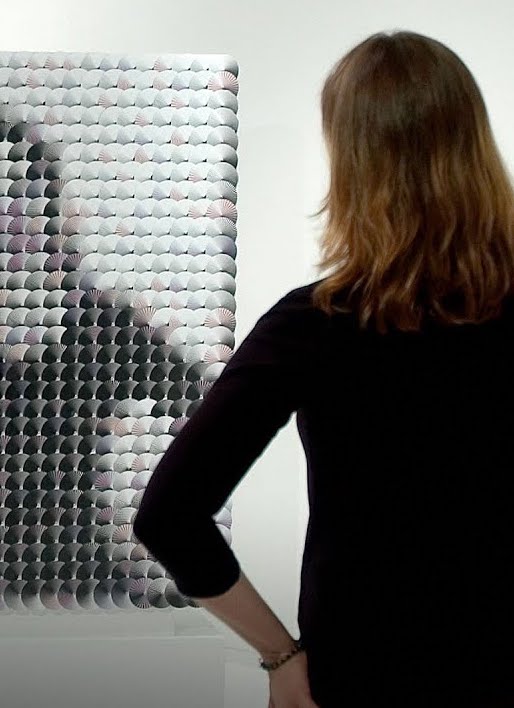
I was recently introduced to the work of Daniel Rozin, faculty member at Tisch School of the Arts in New York City. Rozin was born in Jerusalem and trained as an industrial designer.
He calls the art he makes mirrors—a modest technology he points out has profoundly changed our world but gets very little attention. He has even managed to make interactive mirrors out of wood using little squares that are shifted with servo motors. The dynamic work responds to the movement and objects in front of it. Small wood squares are controlled by concealed cameras and his homemade software. By shifting the angle of each individual square he controls their value, turning the array into a pixilated screen of sorts. The angle of each wood square determines it value—when pointed upward the wood paddle reflects more light and turns lighter, and when turned downward gets darker. The work is beautifully crafted, sophisticated and compelling.
A two-dimensional image does not adequately capture the experience. The onlooker is immediately drawn in.
No need for an instruction manual or set of directions; the viewer becomes enthralled with their own image. Rozin explains that the content of the art is the observer themselves—the mirror changing and responding to their presence and movements. One characteristic of great art is its ability to reflect the culture and time in which it was made. In this respect Rozin’s work is absolutely masterful—captivating and intriguing a society filled with individuals who are self-absorbed and self-focused. A society focused not on understanding what lies in front of them but rather on how to bend external reality to meet their own personal needs. I am not convinced that the poetic nature of his work is at the forefront of Rozin’s thought process—a fact that would make the work even more authentic and powerful. While experiencing one of Rozin’s amazing mirrors, I wonder how many individuals posted selfies of themselves situated in front of themselves.
